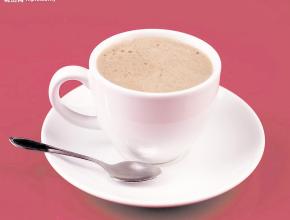Introduction to the method of flavor description and taste treatment in the producing area of Kenya aa coffee hand brewing scheme
Introduction to the method of flavor description and taste treatment in the producing area of Kenya aa coffee hand brewing scheme
Light roasted Kenyan coffee has a very strong taste of banana ester and citric acid, as well as malt and cereal flavors. City-wide baked (Full city) Kenyan coffee has intense aromas of caramel, cocoa and sweet chocolate bars, with berry acidity and finish. However, City roasting and city + roasting (city + City+) can really make Kenyan coffee shine. Kenyan coffee in the performance of City+ roasting, Kenyan coffee will have a typical tropical fruit, white grape flavor, but also has a bright acidity and berry flavor.
The flowery charm of Kenyan coffee is a strong floral aroma that, in some cases, blends with spices to form a lilac-like fragrance. Good roasting can successfully blend the spice with the aroma and prevent the coffee from becoming too irritant. Roasting plays an important role in the formation of this unique aroma and complex sweetness in Kenya.
For the steaming time, often see the powder layer formed by steaming, if no bubbles come out, it means that the steaming time is enough, you can inject water at the central point. Of course, many people are used to using timers for 30-40 seconds, so they can't cope with different beans and different freshness. Resulting in the possibility of steaming some defective smell out. Beginners can use timers temporarily, but it is recommended to observe the powder layer for a long time.
If you steam quickly with a large current, no bubbles will emerge. If you use fine water flow, but the circle is irregular, the water flow is intermittent, and there will be no bubbles. This stage requires a total of 6 concentric circles. After the smallest flow of water is injected into the center point by hand for 2 seconds, the concentric circle is around the first circle, and then each concentric circle is enlarged 1 turn accordingly. To the fifth concentric circle, about 12.5px away from the wall of the filter cup, all powder layers will be wet to water and washed away. Then, go back to the fourth concentric circle. The third stage will explain in detail how to circle the third lap.
After circling 6 concentric circles, the electronic claim will show that the amount of water is about 70-80 grams (including 31.8 grams of water used for steaming). If it exceeds 80 grams, the flow is too large, and you must practice the smallest flow and circle it. Use this thin water to slowly circle and disperse the powder layer formed by steaming, and all the powder is wet to the water, determining the direction of the taste. The first feeling of drinking coffee is that the taste is distributed to the whole mouth, and every taste bud can feel the coffee, which can improve the cleanliness and sweetness.) This stage of the flow requirements is the lowest, even if you break the flow does not affect the taste, as long as it can be wet to all the powder. If the filter paper is washed onto the filter paper during the circle at this stage, the water on the filter paper will be absorbed by the powder layer, because when the fine water flows around, the water absorption rate of the powder layer is slow and the water in the powder layer is not saturated.

Important Notice :
前街咖啡 FrontStreet Coffee has moved to new addredd:
FrontStreet Coffee Address: 315,Donghua East Road,GuangZhou
Tel:020 38364473
- Prev

Notes on hand-made coffee in Kenya-- description of flavor and taste of manor production area
Notes on coffee hand brewing in Kenya-flavor description taste manor production area introduction is contrary to the domestic popular water hand flushing. The water is also injected at the central point, but the flood flows around 2-3 times, and the water in the powder layer is saturated. The impact of the large current on the powder layer is so strong that many people do not dare to go around to the most edge, so they can only circle around the center point and the middle part of the filter cup wall.
- Next

Mantenin's deep-roasted coffee beans Features Flavor Description Variety Manor Introduction
The best coffee in Central and South America is classified according to planting altitude. Coffee beans above 4500 feet are labeled SHB(Strictly Hard Bean);AA+ is the highest grade of Kenyan coffee. Only batches with excellent flavor and few defects are allowed to be labeled AA+. AA is the largest particle, AB.
Related
- Detailed explanation of Jadeite planting Land in Panamanian Jadeite Manor introduction to the grading system of Jadeite competitive bidding, Red bid, Green bid and Rose Summer
- Story of Coffee planting in Brenka region of Costa Rica Stonehenge Manor anaerobic heavy honey treatment of flavor mouth
- What's on the barrel of Blue Mountain Coffee beans?
- Can American coffee also pull flowers? How to use hot American style to pull out a good-looking pattern?
- Can you make a cold extract with coffee beans? What is the right proportion for cold-extracted coffee formula?
- Indonesian PWN Gold Mandrine Coffee Origin Features Flavor How to Chong? Mandolin coffee is American.
- A brief introduction to the flavor characteristics of Brazilian yellow bourbon coffee beans
- What is the effect of different water quality on the flavor of cold-extracted coffee? What kind of water is best for brewing coffee?
- Why do you think of Rose Summer whenever you mention Panamanian coffee?
- Introduction to the characteristics of authentic blue mountain coffee bean producing areas? What is the CIB Coffee Authority in Jamaica?

